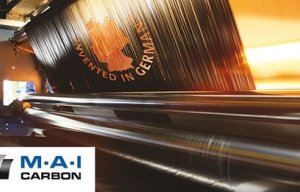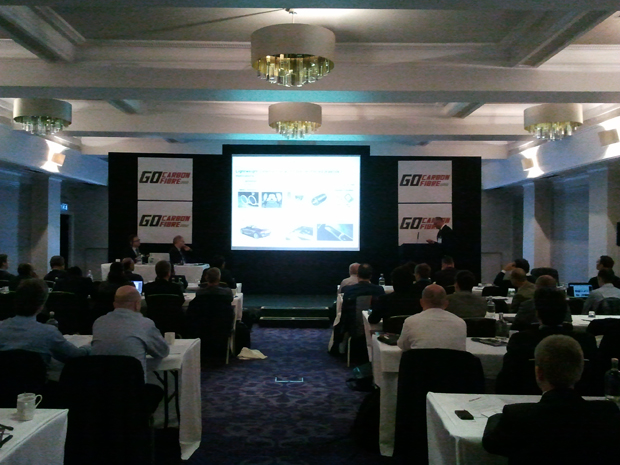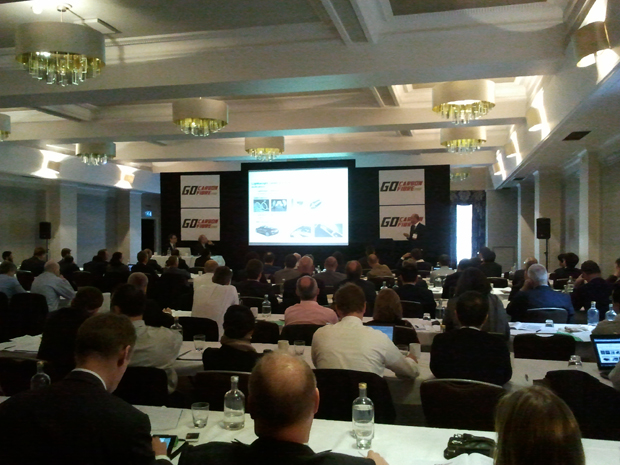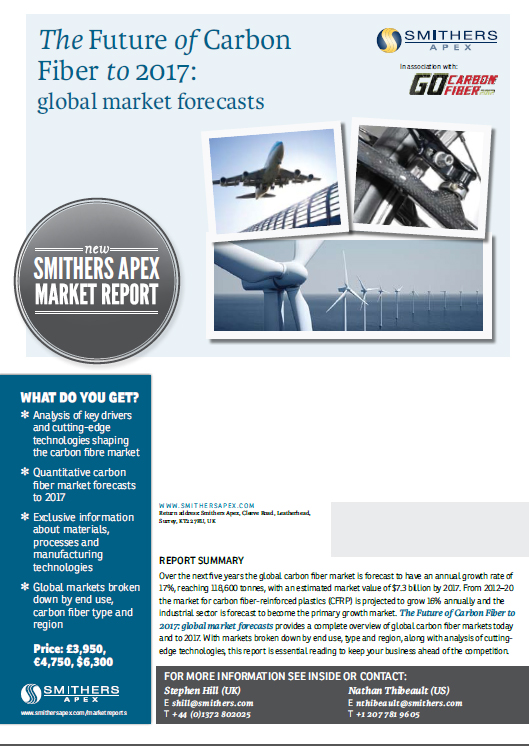
Positive results from the MAI Carbon cluster
Chuck Segal reports from London 2-4 October 2012, Grand Connaught Rooms, London, UK The carbon fibre industry is alive and well according to the recent international gathering of more than 120 engineers and marketing executives. The conference, organised by Smithers-Rapra is the 15th annual meeting of this group.

8th November 2012
Innovation in Textiles
|
London
The carbon fibre industry is alive and well according to the recent international gathering of more than 120 engineers and marketing executives. The conference, organised by Smithers-Rapra is the 15th annual meeting of this group.
While the majority of attendees were from the UK and Western Europe, there were a good number of representatives from the USA, the Middle East, and Asia. As in previous years, the conference include one full day of workshops - one on carbon fibre manufacturing and a second on recycling of carbon fibre and composites.
The second and third days were devoted to a range of carefully-selected and related papers. Most, but not all of the papers will be reviewed in the paragraphs that follow. Several of the presentations are worth noting, and more time will be spent in reviewing these. The reviewer has participated in all of these conferences and has published an anonymous review for the past 5 years.
The following is Global Outlook for Carbon Fibre 2012 – Part 2.
Global Outlook for Carbon Fibre 2012 - Part 1 was published on www.innovationintextiles.com yesterday.
From Fibres to Composites
The next group of four papers came under the heading of “From Fibres to Composites”. A most significant paper in this session was delivered by Dr. Jan Verdenhalven, Managing Director of CarbConsult (Germany).
Verdenhalven made a strong case for thermoplastic composites vs. thermoset composites, especially in automotive applications. He compared several existing methods of preparing carbon fibre thermoplastic sheet to a new “roll-coating” method developed by CarbConsult. Based upon a reduced cost of the raw carbon fibre, reduced “prepregging” cost (high speed), and optimized equipment cost, he estimates the final cost of the unidirectional material at €13/kg.

This lower cost material, plus reduced fabrication cycle time, should make this material attractive to automobile manufacturers. Tom James, Head of R&D of FORMAX (UK) described the production of multiaxial fabrics and their advantage in high volume production of composite parts.
Chris McHugh, Technical Manager of SIGMATEX (UK) described the development of 3D woven fabrics and the advantages gained by their new high speed equipment - 19.6 yards/hour now increased to 39 yards/hour.
The final paper in this track was by Dr. Avetik Harufyunyan, Chief Scientist of Honda Research Institute (USA). His well-prepared, well-presented, and scholarly paper was a thorough discussion of carbon nanofibres and their advantages in the preparation of lightweight composite structures.
Day one was completed with a roundtable discussion orchestrated by Dan Pichler. The roundtable was made up of fibre suppliers, end users (auto), and industry consultants. The challenge was to predict the future of carbon fibre supply and demand. The auto makers are ready to begin full-scale production of vehicles, but the price of fiber leads to a much higher vehicle price, and the potential volumes of fibre are much larger than are currently projected. The fibre suppliers can marginally improve the cost of fibre by improving production efficiency, but they are currently limited by the cost of raw material. The industry may need to live with PAN-based carbon fibre for the near future, and the consumer may have to pay the higher price for a lighter, more energy efficient vehicle - - or not.
Supply Chain and Life Cycle Dynamics for Carbon Fibre Composites
The second day of the conference included two new tracks. The first track was entitled “Supply Chain and Life Cycle Dynamics for Carbon Fibre Composites”. The first paper was by Julien Tachon, Senior Engineer, Materials R&D, Toyota Motor Europe (Belgium). He stated the case for light-weighting a passenger car (reduced CO2 and reduced fuel), and illustrated with the example of the company’s Lexus LFA.
A major reduction of weight was achieved by making the body-in-white with thermoset composites (prepreg, RTM, 24K NCF). The production cycle was longer than desired, and Toyota then developed thermoplastic materials (PA6/CF) and processes (thermoforming and injection moulding) with both discontinuous and continuous carbon fibre. The first small-scale production (25/month) was for the 2010 Lexus LFA. While the estimated price was 350,000 USD, the weight reduction and potential for lowering life cycle cost were demonstrated, and Toyota predicts that these materials and processing technologies will be in “mainstream vehicles” by 2020.

Prof. Jan-Anders E Mason, ECOLE Polytechnique Federal de Lausanne (Switzerland) presented the results of a comprehensive and scholarly study of the life cycle cost of an automotive component made with a wide range of materials and processes. The materials included steel, magnesium, glass fibre reinforced thermoplastic, and carbon fibre reinforced thermoset.
While fibre composites are currently more expensive than metals, the life cycle cost may be less due to the lower cost of fuel. The reader who is interested in the details of the study may see the complete paper as published in the 6 August 2011 on line issue of Composites: Part A 42 (2011) 1694-1709.
A similar study was conducted by Prof. Karel van Acker, Ku Leuven (Netherlands). This study compared the life cycle cost for the body-in-white of a Volkswagen made of either steel or carbon fibre reinforced thermosetting matrix. Each step in manufacture was analyzed in terms of energy consumption - including incineration or recycling. The breakeven mileage for steel vs. CFRP is 132,000 km based on this study. Replacing the thermosetting matrix with thermoplastic matrix was suggested as a step towards reducing life cycle cost.
The final track consisted of papers on automation and testing of composites. Andrew Mafeld, Managing Director of CONNECTRA GLOBAL (Sweden) gave examples of several composite manufacturing processes currently being used to reduce production time.
While hand layup and autoclave curing may be optimum or less than 1000 parts per year, injection moulding of long fibre thermoplastics (LFT) and high pressure moulding of glass mat thermoplastic (GMT) are more efficient in the range of 10,000 to 1 million parts per year. Automated tape laying (ATL) and automated fiber placement (AFP) are being used increasingly in aircraft composite fabrication.
The last paper of the conference was given by Dr. Daniel Bailey, Product and Market Manager, INSTRON (UK). INSTRON is the predominant supplier of test machines and test fixtures for composite materials and composite components. Dr. Bailey gave a comprehensive tutorial on the testing of composites which ranged from single filament tests to realistic testing of finished composite components.
Managing Director, Omnia LLC, [email protected]
(On behalf of Smithers Apex)

Buy the The Future of Carbon Fiber to 2017 report.

Business intelligence for the fibre, textiles and apparel industries: technologies, innovations, markets, investments, trade policy, sourcing, strategy...
Find out more